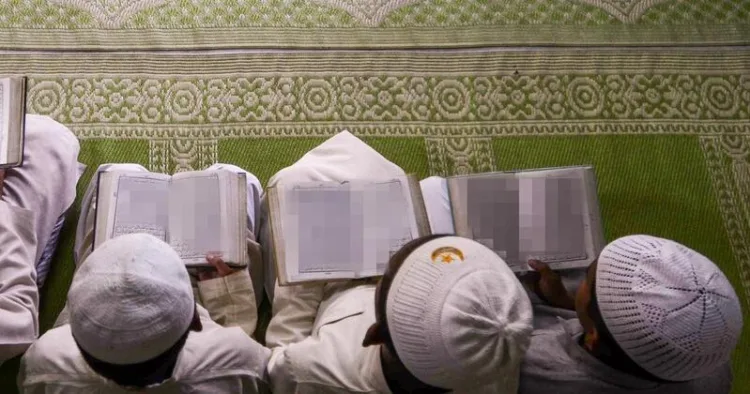Kerala, over the years has witnessed an increase in the number of Madrasas across its rural and urban regions. With a Muslim population of approximately 26 per cent, the state has seen a massive surge in religious education institutions, with over 21,000 Madrasas currently operating within its boundaries.
The Kerala government has committed substantial public funds towards the salaries and pensions of Madrasa teachers, prompting concerns over the growing expenditure on religious education. According to official data presented by KT Jalil, the Minister of Higher Education, the financial burden on the state’s exchequer is staggering, amounting to nearly Rs 7,580.5 crores annually, including salaries and pensions for Madrasa teachers.
https://twitter.com/bgopu1973/status/1868973275432231141?t=T0VsPhFm_uXxXzfuUi5goA&s=08
The Expanding Madrasa Network
Kerala has a total population of 3,56,99,443, with Muslims making up about 26 per cent of this figure, equating to 88,73,472 individuals. Given this significant demographic, it is unsurprising that the number of Madrasas has ballooned to a staggering 21,683 institutions across the state.
With 941 Panchayats in Kerala, this means that there is an average of 23 Madrasas per Panchayat — a substantial presence of religious schools in even the most rural areas. This figure is indicative of the deep roots of Islamic education in Kerala, with more than one madrasa often present in each ward of the Panchayat.
Financial Implications: Madrasa Teacher Salaries and Pensions
A closer look at the finances reveals the enormous strain Madrasas are placing on the state’s public funds. The salary of each madrasa teacher is estimated at Rs 25,000 per month, excluding those who work on an hourly basis at rates of Rs 300 per hour. With a total of 2,04,683 madrasa teachers spread across Kerala, the total salary payout for these educators amounts to approximately Rs 511.7 crores per month (Rs 5,11,70,75,000).
In addition to regular salaries, Kerala’s state government has also implemented a pension scheme for madrasa teachers, which provides Rs 6,000 per month to 2,00,000 teachers. The total monthly pension expenditure stands at Rs 120 crores (Rs 1,20,00,00,000).
Together, the total financial commitment for madrasa teacher salaries and pensions each month amounts to an overwhelming Rs 631.7 crores (Rs 6,31,70,75,000).
Annual Financial Burden
The expenditure on madrasa salaries and pensions alone totals nearly Rs 7,580.5 crores per year (Rs 7580,49,00,000), a significant figure in the context of Kerala’s overall state budget. This amount has sparked debate regarding the allocation of public funds to religious education and whether it aligns with the broader developmental priorities of the state.
A Divisive Issue
The growing financial commitment to Madrasas has generated mixed reactions in Kerala’s political and social landscape. Many question the wisdom of allocating such large sums of public money to religious institutions that predominantly serve one community. The fact that the Madrasas are funded by the state, which also spends substantial amounts on other education sectors, has raised concerns about fairness and equality in the distribution of state resources. Critics also point to the potential for these institutions to promote religious extremism, even though most Madrasas in Kerala focus on basic Islamic education.
The students studying in these Madrasas will become Alim or clerics and will need formal education to gain other forms of employment. At this condition, the excessive spend on religious education by a government meant for all raises serious questions.
The issue of Madrasas and their financial backing is undeniably complex, touching on sensitive questions of religious education, state expenditure, and community identity. Kerala’s commitment to funding Madrasas has resulted in a robust educational infrastructure within the Muslim community, but the financial strain it imposes on the state’s budget cannot be overlooked.
With the current trajectory, Kerala will need to closely examine its future priorities to ensure that the fiscal health of the state is not compromised in the pursuit of specific community-driven educational goals.
(as per a post on X)



















Comments